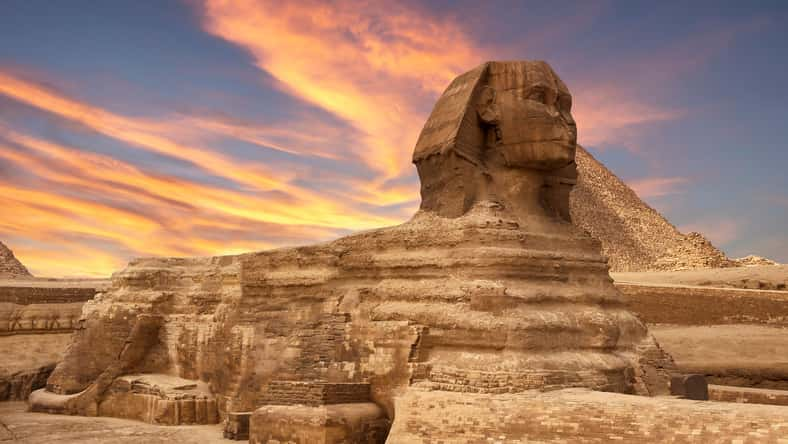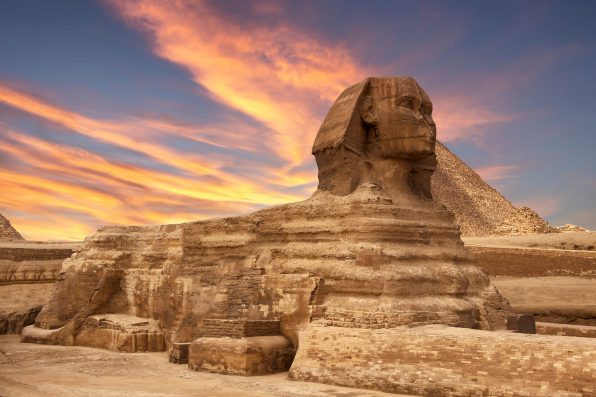Research Suggests That Ancient Egyptians May Have Received Some Help Crafting The Great Sphinx Of Giza, With Fast Winds Influencing The Initial Shape Of The Iconic Monument

The Great Sphinx of Giza is known as the oldest monument in Egypt and stands as a marvel of engineering and artisanship. This colossal structure, reaching 66 feet in height, was impressively sculpted from a single limestone ridge.
However, recent research suggests that the ancient Egyptians may have received some assistance in creating this monumental work from natural elements in the region over 4,500 years ago.
Scientists from New York University’s Applied Mathematics Laboratory conducted experiments to mimic the environmental conditions of northeastern Egypt around 2,500 B.C.E, coinciding with the time the Sphinx was built.
Their goal was to understand how fast-moving winds, interacting with natural rock formations, might have influenced the initial shaping of the Sphinx.
Specifically, the researchers recreated yardangs, which are distinctive ridge-like landforms formed by wind or dust erosion, typically seen in dry areas. They theorized that these yardangs could have provided a natural template that the ancient sculptors used as a starting point for carving the Sphinx.
The researchers replicated these natural structures by embedding softer clay mounds with materials that were harder and less susceptible to erosion. They then exposed these mounds to a rapid stream of water, simulating the effect of wind. This process reshaped the mounds into forms resembling the Sphinx.
The study found that the harder, more erosion-resistant material was sculpted into the statue’s head, creating a “wind shadow” that protected the body. Additionally, they observed that the Sphinx’s back, neck, and paws were shaped by the “turbulent wake” of the wind.
“Our laboratory experiments showed that surprisingly Sphinx-like shapes can come from materials being eroded by fast flows,” explained Leif Ristroph, an associate professor at NYU’s Courant Institute of Mathematical Sciences.
“The work may also be useful to geologists as it reveals factors that affect rock formations– namely, that they are not homogeneous or uniform in composition. The unexpected shapes come from how the flows are diverted around the harder or less-erodible parts.”

Alfredo – stock.adobe.com – illustrative purposes only
The research, which has since been published in Physical Review Fluids, suggests that while the basic shape of the sculpture might have emerged naturally, the more intricate details of the Sphinx, like its facial features, were likely carved by hand.
These findings align with a hypothesis originally proposed by geologist Farouk El-Baz in 1981, which suggested that the Great Sphinx may have been sculpted from an existing yardang, a naturally occurring landform.
In 2001, El-Baz expanded on this idea in a paper where he argued that the rise of Egyptian civilization 5,000 years ago coincided with significant climatic shifts in the eastern Sahara, notably a severe drought. This change in climate led to the formation of striking natural features, including yardangs.
“Our work proposes a simple picture for how yardangs might form, and we were able to test and confirm the hypothesis in lab experiments,” Ristroph concluded.
“I find this thrilling, that we can bring such questions into the lab where we can ‘replay’ over hours what takes eons to happen in nature. And that these experiments can perhaps give a little insight about such a cultural icon as the Sphinx is a beautiful bonus.”
To read the study’s complete findings, visit the link here.
Sign up for Chip Chick’s newsletter and get stories like this delivered to your inbox.
More About:Science





